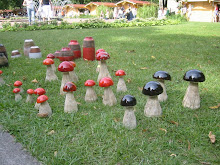‘Creativity, design and innovation’ are vital to the sustainable development of every society. Yet they often mean different things to different people. This is an attempt to take a more holistic and integrated look at these concepts. We hope this and the next piece can stimulate more discussions on what creativity, design and innovation mean for businesses, educators, the public and the third sectors; and what the development priorities should be for your city.
1. Creativity ≠ Innovation
- Creativity is the ability to generate new ideas. It is the first step to innovation.
- All people can be creative provided the conditions are right and they have the relevant knowledge and skills.
- The potential for creativity is not limited to any particular role or process within a firm. Successful companies promote creativity in all parts of the organisation.
- Factors that influence creativity include management beliefs, systems, practices and incentives.
- Creativity is vital for each and every facet of the economy and the society. It is not just the creative industries. All industries have to be creative.
- Factors that influence creativity in a society include culture, education, government regulations and competition.
2. Innovation is > new product or technology
- Creativity is about coming up with ideas while innovation is about bringing ideas to life
- Innovation can be big or small, radical or incremental.
- Most people associate innovation with product and technology. There are other types of innovation and they are not necessarily mutual exclusive:
o Service innovation is the introduction of new or improved service offerings and user experience. It is relevant to both commercial (e.g. financial services) and public organisations (e.g. education and health care), service and manufacturing industries[1] alike (e.g. iPhone and Apps).
o Business model innovation involves changes in the WHAT (the value proposition of an offering), WHO (customers, collaborators or competitors and/or HOW a firm aligns its resources, processes and profit formula. IKEA, for example, brings together low cost and stylish design.
o Process innovation results in a change in the way a product or service is created, delivered, sold or consumed (e.g. supply chain management)
o Management innovation is the introduction of a new management practice, process, structure, or technique to further organizational goals (e.g. flexi hours)
o Social innovation refers to new ideas that resolve existing social, cultural, economic and environmental challenges. It can take place in the for-profit, nonprofit and public sectors and increasingly in the spaces between these three sectors (e.g. urban farming).
- More and more developed economies have adopted services and non-technological innovation as a strategic development priority[2]. Leading companies and education institutes are shifting their focus from product to service innovation as ‘the next hot area’[3]. Innovation in services often involves complementary changes to technologies and non-technological factors (such as skills and organisational culture and structure) and hence the importance of multi-disciplinary collaboration.
- There has also been a significant shift from a producer and technology-centric approach to user-centric innovation, whereby innovation is inspired or even driven by users in a more and democratic manner[4].
[1] Successful manufacturing firms often provide both a physical product and an accompanying service.
[2] Council of the European Union, Council Conclusions on a Broad-based Innovation Strategy, Dec 2006
[3] ‘Service Innovation: The Next Big Thing’, Business Week, 29 March 2007
[4] Richard Seymour (a renowned designer) said at the sixth annual meeting of the International Advisory Panel of the Design Singapore Council that Singapore ‘needs to place anthropology before technology.’ (Oct 2010)




No comments:
Post a Comment